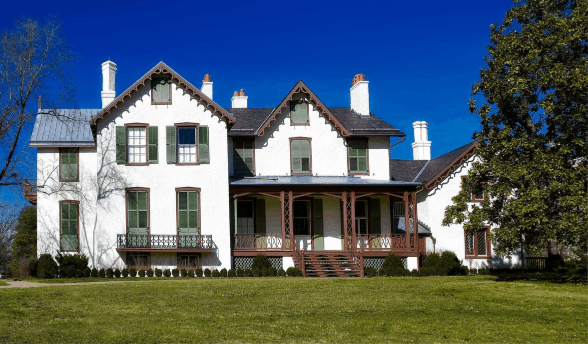How to Create a Cosy Country Cottage Look
Period buildings and quirky cottages are wonderful character homes to live in. It’s the wealth of architectural features and decorative detail that makes these old buildings so special. Homeowners appreciate the individuality of their homes – but they do throw up some challenges when it comes to styling, decorating and maintaining them.
In order to do your cottage justice and preserve its historic appeal, not to mention its premium price when it comes to putting it on the market, you need to work with the building, not against it. Here are some useful tips to show you how.

Window treatments
The windows are the eyes of the house. They let the light shine in and brighten our homes. Cottage style homes are informal, often with period sash windows to give them their special aesthetic appeal. Timber sash windows need regular upkeep to keep functioning smoothly, but with professional servicing there’s no reason why the original windows shouldn’t keep going for decades, if not centuries. Don’t be tempted to replace them with modern versions; you will lose the authenticity that is so precious to your home. Window treatments should be light and airy – sheer panels and lace are better than heavy fabrics and opaque panels. For privacy, choose simple shades or blinds that can be hidden away during the day.
Indoor flooring
You should expect your cottage to have imperfect flooring with a historic resonance. Wooden floorboards could be sanded and painted, flagstones or ceramic tiled floors exposed and featured. “Flagstone flooring naturally suits a country setting, so if you have an original one you should consider restoring it to its former glory,” recommends Country Living. New wood can be made to look older and painted floors could be embellished with patterns or stencils to add interest and definition. A few carefully chosen rugs will add warmth and character. Fitted carpets can be tricky to get right – they may look a little too refined in a higgledy-piggledy building where nothing is perfectly straight. If you do go for carpet, choose a rustic look that has natural imperfections.

Choosing furniture
Cottages are meant to look rustic and authentic, and the furniture you choose should reflect this. Go for a practical rather than glamorous feel that is sympathetic to the architectural heritage of the building. New furniture made from modern materials – MDF, laminate, plastic – may feel completely out of place, as do contemporary designs from retailers such as IKEA. Individual pieces also need to be in proportion to the room dimensions. A Victorian mahogany sleigh bed may dwarf the bedroom more than a less visually impsing cast iron bedstead. A heavy wardrobe will dominate the space more than corner cupboards and chests of drawers.

Vintage vibe
Preloved pieces, vintage finds, family heirlooms and a bit of improvisation are all part of creating an informal yet cosy cottage ambience. Why not use a wooden bench as a coffee table, or a pine kitchen table as a desk? An old ladder could double up as a quirky towel rail in the bathroom, or a salvaged iron fence might make a unique headboard. In cottage decor, pieces are often adapted from one use to another, and perfectionism doesn’t figure. The trick is to achieve a coherent look but one that seems to have organically evolved over time.
Fabrics and soft furnishings
Natural fabrics with traditional patterns – florals, stripes, checks – will help you to achieve the most inviting and authentic look. Mix and match fabrics and soft furnishings to a coordinated (but not matchy-matchy) theme in cushions and throws, curtains and upholstery. A unifying interior theme might be English Country Garden (pinks, greens, florals), or Rustic Wood (greens, rust, golden tones) or Coastal Cottage (blues, beige, white). Keep colours natural and muted, not synthetic and loud. Patriotic colour schemes also work well.
Cottage lighting
Good levels of lighting for your period home start with maximising any natural daylight coming in by keeping window sills and apertures clutter free and sparkling clean. Adapt a layered artificial lighting approach to supplement natural light, with ambient, task and accent lighting to achieve optimum illumination. Stay clear of contemporary and industrial style light fittings and harsh light output, majoring on achieving distributed light through the use of table lamps and floor lamps. This is the place to indulge in quirky traditional lamp stands and shades or historic family hand-me-downs, which will add to the cosy cottage feel.
Finishing touches
Furniture, furnishings and accessories can be an eclectic assortment of treasures that can come from anywhere – here and abroad, antique shops and flea markets, grandma’s attic and travel curios. Exotic mirrors, oriental rugs, European antiques, musical instruments, charming plates and old hats – it’s how the English have always decorated their country cottages and how the ‘cottage style’ has evolved through the centuries. While you don’t want your home to end up looking like a junk shop or a museum, it gives you a wealth of creative freedom to create the right ambience for a cosy, rustic home.







Leave a Reply